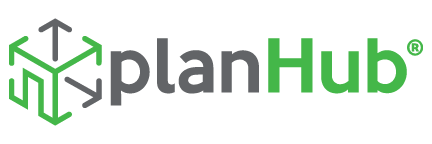Why PPC Landing Page Design Matters?
A well-designed PPC landing page can be the difference between a successful campaign and a complete flop. If you want to drive conversions and increase your ROI, you need to make sure your landing page is designed to impress both users and the Google Bot. In this blog post, we’ll cover 10 unbeatable tips for designing high-converting PPC landing pages that will help you achieve PPC campaign success. So, buckle up and let’s dive in!
Keep It Simple and Focused
The first tip is to keep your landing page design simple and focused. Avoid clutter and distractions, as they can confuse your visitors and reduce your conversion rate. Stick to a single, clear message and call-to-action (CTA) that aligns with your ad and target audience’s needs.
- Use whitespace to your advantage
- Limit the number of fonts and colors used
- Avoid unnecessary images or animations

Create a Compelling Headline
Your headline is the first thing visitors will see, so it needs to be attention-grabbing and persuasive. Make sure it clearly communicates the main benefit of your offer and speaks directly to your target audience.
- Use strong, action-oriented words
- Keep it concise and to the point
- Test different headline variations to see which one performs best
Use High-Quality, Relevant Images
Visuals play a crucial role in capturing your audience’s attention and creating an emotional connection. Choose high-quality, relevant images that support your message and resonate with your target audience.
- Use images that showcase your product or service in action
- Opt for original photography over generic stock images when possible
- Don’t forget to add descriptive alt text for accessibility and SEO purposes
Emphasize Benefits, Not Features
When it comes to PPC landing pages, highlighting the benefits of your product or service is more important than listing its features. Focus on how your offering can solve a problem, fulfill a need, or improve the lives of your target audience.
- Clearly communicate the unique value proposition
- Use bullet points or numbered lists to make benefits easy to scan
- Support your claims with social proof (e.g., testimonials, case studies, or trust badges)
Design Mobile-Friendly Landing Pages
With more and more people using their mobile devices to browse the internet, it’s essential to design landing pages that are responsive and user-friendly on all devices.
- Use mobile-first design principles
- Ensure fast loading times by optimizing images and scripts
- Test your landing page on various devices and screen sizes
 Implement Clear and Compelling CTAs
Implement Clear and Compelling CTAs
Your call-to-action (CTA) is arguably the most important element on your landing page. It should be clear, compelling, and easy to spot. A well-designed CTA can significantly boost your conversion rates.
- Use contrasting colors for your CTA button to make it stand out
- Keep the CTA text short, action-oriented, and persuasive
- Place your CTA above the fold and consider adding multiple CTAs throughout the page for increased visibility
Leverage Social Proof and Trust Signals
Building trust with your visitors is essential for driving conversions. Leverage social proof and trust signals to show that others have found value in your product or service.
- Include testimonials or case studies from satisfied customers
- Showcase awards, certifications, or industry affiliations
- Display trust badges (e.g., secure payment, money-back guarantee, or privacy policy)
Optimize for Speed and Performance
A slow-loading landing page can frustrate your visitors and lead to high bounce rates. Optimize your landing page for speed and performance to ensure a smooth user experience.
- Compress and optimize images
- Minify CSS, JavaScript, and HTML files
- Use a content delivery network (CDN) to speed up page load times
Test, Analyze, and Iterate
Continuous testing and optimization are key to achieving high-converting landing pages. Use A/B testing to experiment with different design elements, copy, and CTAs to determine what works best for your audience.
- Track key performance indicators (KPIs) and conversion metrics
- Analyze the results of your tests and make data-driven decisions
- Continuously refine your landing page based on insights gained from testing
Keep SEO in Mind
While PPC landing pages are primarily designed for paid traffic, it’s still important to consider SEO best practices. This can help your landing page rank organically and bring in additional traffic.
- Use relevant keywords throughout the content, but avoid keyword stuffing
- Create SEO-friendly URLs and include the focus keyword
- Add focus keywords to your SEO title and meta description
Q1: How do I know if my PPC landing page is successful?
A: Monitor your landing page’s conversion rate, bounce rate, and other key performance indicators (KPIs) to determine its success.

Q2: How can I improve my PPC landing page’s quality score?
A: To improve your quality score, focus on creating relevant and engaging content, optimizing your landing page for speed and performance, and ensuring a positive user experience. Make sure your keywords, ad copy, and landing page content are all closely aligned, and consider improving your ad’s click-through rate (CTR).
Q3: How often should I update my PPC landing page?
A: Regularly review your landing page’s performance and make updates as needed. This could involve tweaking the design, updating the copy, or implementing new features based on user feedback or A/B test results. It’s essential to continuously optimize your landing page to ensure the best possible results.
Q4: Can I use the same landing page for multiple PPC campaigns?
A: While it’s possible to use the same landing page for multiple campaigns, it’s often more effective to create unique, tailored landing pages for each campaign. This allows you to better match your ad copy, keywords, and landing page content, resulting in higher relevance and quality scores, and ultimately, better conversion rates.
In Conclusion
Designing an effective PPC landing page requires a strategic approach, focusing on user experience, engaging content, and continuous optimization. By following these tips and best practices, you’ll be well on your way to creating high-converting landing pages that drive results for your business.
Ready to stay updated on the latest digital trends and insights? Subscribe to our newsletter and never miss out on valuable information that can help you grow your business online!
Don’t forget to visit d-dat.com for more quality and useful blog posts!







